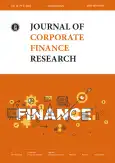Influence of Mezzanine Financing on the Corporate Financial Profile
- Authors: Gorodnikov K.1, Pavlov M.2, Sus A.2
-
Affiliations:
- Alfa Capital
- VTB Bank
- Issue: Vol 16, No 2 (2022)
- Pages: 70-95
- Section: Corporate Financial Analytics
- URL: https://journal-vniispk.ru/2073-0438/article/view/302317
- DOI: https://doi.org/10.17323/j.jcfr.2073-0438.16.2.2022.70-95
- ID: 302317
Cite item
Full Text
Abstract
Due to global changes in the global economy, the importance of financing and building an optimal capital structure is increasing. Rapid changes in the exogenous environment and the investment climate lead companies to revise their financing strategies.
Currently, there are many financial instruments that provide cash inflow, but have certain restrictions. The tool that allows to eliminate them is the mezzanine. However, the existing literature on mezzanine financing does not fully cover this financing method. The novelty of this research lies in determining the financial profile of the borrower company that utilizes mezzanine financing, and in studying the impact of the mezzanine on the market value of a company’s equity and its value. Econometric analysis confirms that mezzanine financing is more often chosen by companies with a less attractive financial profile, based on ROA, EBITDA – CapEx cash flow, and beta. In addition, the interconnection between a company’s life cycle and its desire to attract a mezzanine loan is revealed. Econometric and empirical analysis allow us to conclude that the market situation, managerial methods within the company and the operational strategy increase the chances of the effective use of the mezzanine.
About the authors
K. Gorodnikov
Alfa Capital
Author for correspondence.
Email: kgorodnikov@yandex.ru
M. Pavlov
VTB Bank
Email: pavlovmikhail70@yandex.ru
A. Sus
Email: issemsus@gmail.com
References
- Sazonov S., Ezangina I., Makarova E., Gorshkova N. Alternative sources of business development: Mezzanine financing. Scientific Papers of the University of Pardubice, Series D: Faculty of Economics and Administration. 2016;24(2):806.
- Damodaran A. Investment valuation: Tools and techniques for determining the value of any asset. New York: John Wiley & Sons, Inc.; 2002. 992 p.
- Baker M. Definition of a mezzanine loan. 2014.
- Czajkowska A. Mezzanine as an alternative form of corporate financing. Oeconomia Copernicana. 2015;6(1):99–111. https://doi.org/10.12775/OeC.2015.005 DOI: https://doi.org/10.12775/OeC.2015.005
- Tetrevova L., Svedik J. Mezzanine financing instruments in comparison to the classic financing sources. Business, Management and Economics Engineering. 2018;16(1):133–146. https://doi.org/10.3846/bme.2018.2205 DOI: https://doi.org/10.3846/bme.2018.2205
- Nijs L. Mezzanine Financing: Tools, Applications and Total Performance. New York: John Wiley & Sons, 2014. DOI: https://doi.org/10.1002/9781118797075
- Marszałek J. Design of convertible debt financing – some observations from the American market. Business and Economic Horizons. 2015;11(2):64–75. https://doi.org/10.15208/beh.2015.06 DOI: https://doi.org/10.15208/beh.2015.06
- Karpenko O.A., Blokhina T.K. Convertible bonds for companies investment process. Academy of Strategic Management Journal. 2019;18(6). URL: https://www.abacademies.org/articles/Convertible-bonds-for-companies-investment-process-1939-6104-18-6-483.pdf
- Olivier A., Florence A., Jean-Laurent V. Callable convertible bonds in sequential financing: Evidence on the Western European Market. Journal of Multinational Financial Management. 2018;45:35–51. https://doi.org/10.1016/j.mulfin.2018.04.001 DOI: https://doi.org/10.1016/j.mulfin.2018.04.001
- Abhyankar A., Dunning A. Wealth effects of convertible bond and convertible preference share issues: An empirical analysis of the UK market. Journal of Banking & Finance. 1999;23(7):1043–1065. https://doi.org/10.1016/S0378-4266(99)00002-3 DOI: https://doi.org/10.1016/S0378-4266(99)00002-3
- Yoo J.-I., Lee E.-B. Balancing project financing and mezzanine project financing with option value to mitigate sponsor’s risks for overseas investment projects. Sustainability. 2018;10(5):1498. https://doi.org/10.3390/su10051498 DOI: https://doi.org/10.3390/su10051498
- Stein J.C. Convertible bonds as backdoor equity financing. Journal of Financing Economics. 1992;32(1):3–21. https://doi.org/10.1016/0304-405X(92)90022-P DOI: https://doi.org/10.1016/0304-405X(92)90022-P
- Harris M., Raviv A. The theory of capital structure. TheJournal of Finance. 1991;46(1):297–355. https://doi.org/10.1111/j.1540-6261.1991.tb03753.x DOI: https://doi.org/10.1111/j.1540-6261.1991.tb03753.x
- Kazmierczak D. Do callable convertibles support the investment process of a company? An analysis the world market of hybrid debt. Comparative Economic Research. 2017;20(2):5–19. https://doi.org/10.1515/cer-2017-0009 DOI: https://doi.org/10.1515/cer-2017-0009
- Li W.-H., Rhee S.G., Shen C.H.-H. CEO inside debt and convertible bonds. Journal of Business Finance & Accounting. 2018;45(1-2):232–249. https://doi.org/10.1111/jbfa.12285 DOI: https://doi.org/10.1111/jbfa.12285
Supplementary files










